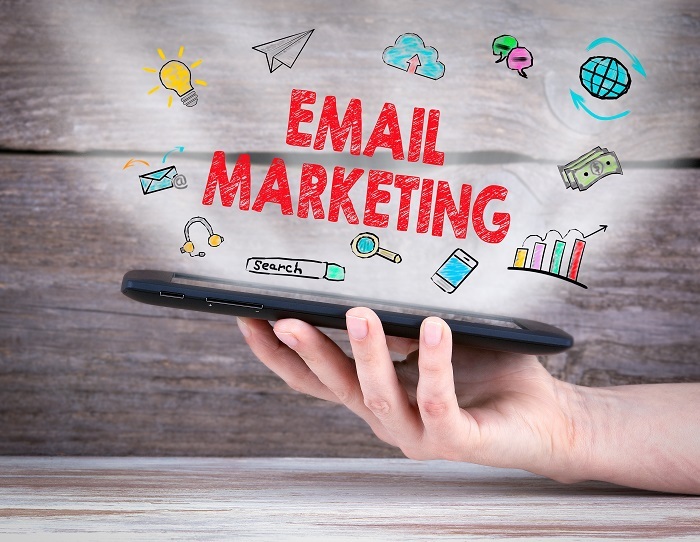
 Data Structure
Data Structure Networking
Networking RDBMS
RDBMS Operating System
Operating System Java
Java MS Excel
MS Excel iOS
iOS HTML
HTML CSS
CSS Android
Android Python
Python C Programming
C Programming C++
C++ C#
C# MongoDB
MongoDB MySQL
MySQL Javascript
Javascript PHP
PHP
- Selected Reading
- UPSC IAS Exams Notes
- Developer's Best Practices
- Questions and Answers
- Effective Resume Writing
- HR Interview Questions
- Computer Glossary
- Who is Who
How to Determine the Marketing Channels Optimal for Target Market?
Choosing the appropriate platform for their brand communication is one of the main issues facing contemporary marketers. These days, there are a tonne of channels available, especially with the tremendous rise of online channels. Several small businesses cannot afford to employ a specialized marketer full-time. So how do you make your way through the confusion and uncover the opportunities that have a significant return on investment? Here is a road map to assist you.
What is a Marketing Channel?
A marketing channel is merely a method or platform for reaching your target audience with your marketing message (audience). All marketing is guided by the following fundamental ideas ?
Determine the needs and desires of the client
Send marketing messages;
Choose the best routes to reach your target audience.
A point of purchase or platform that a business uses to interact and engage with its target market is referred to as a marketing channel. Online and offline, free and premium platforms are all included in the marketing channels. With the intention of showcasing the ideal consumers for their product and service offerings and influencing lucrative consumer behavior, marketers frequently distribute messages and information across marketing platforms.

The email inbox of a target group participant is an example of a marketing channel. This channel can be used by marketers to implement pay-per-click (PPC), referral, event, and other marketing strategies. Similar to this, social media sites like Facebook serve as marketing platforms. Facebook can be used by marketers for live streaming, co-branding and partnering, content curation, and other marketing strategies.
Which Marketing Channel Should Be Taken into Account?
Today, there are so many great options that picking the best marketing mix can be challenging. Simply said, marketing mix refers to the media you use to spread your message. These depend on your marketing spend as well as other factors.
The phrase's frequency and reach are important to understand when selecting a marketing channel. How frequently a communication is sent is known as its frequency. Reach is the term used to describe the size of the audience. It's not for you if your channel doesn't connect with your audience or effectively convey your message.
What Marketing Channels Can Be Available?
The fundamental list of traditional and digital channels to take into consideration is provided below.
Traditional Marketing Channels |
Digital Marketing Channels |
|---|---|
Printing advertisement methods like newspapers, magazines, etc. |
Sites and Blogs |
Radio and TV |
Search engine optimization (SEO) and Search engine advertising |
Telemarketing and personal selling |
Social media marketing on platforms like Facebook, Instagram, Twitter, etc. |
Billboards, Newsletters, Direct mail |
Mobile apps and E-mail marketing |
Selling collateral - brochures, pamphlets, displays, etc. |
Webinars |
Trade shows, events, incentives, and loyalty programs |
Display advertising by vendors |
How Can You Choose a Marketing Channel Match That Works Best?
Consider the following inquiries as you explore your options ?
Will it get to your intended audience?
Is it within your price range?
Are you able to successfully communicate your message?
Is it possible to gauge effectiveness?
Can you use it alongside the other channels you pick?
Successful communication requires consistency
Once you've chosen the ideal combination of channels, check to see that your messaging is the same across all channels. A successful marketing strategy combines a variety of channels to reach your target demographic.
Measurement
Many people, especially seasoned marketers, make the error of failing to evaluate a channel's ROI and efficacy. Increased brand exposure, generating leads, revenue generation, client engagement, traffic (for digital platforms), and advocates are the five main indicators of success (for traditional channels). Increased web and social media engagement is referred to as traffic. Advocates are those who are eager to spread the word about your brand.
Examine why a channel isn't generating a profit and whether it still belongs in your marketing mix if it's not producing one. Finding the proper combination will produce fruitful outcomes. You could waste both time and money if you take one wrong step.
Channels for Effective Digital Marketing That Can Be Taken into Account
Different pathways produce various outcomes. You may make better business selections if you are aware of your possibilities and understand how each channel operates.
Marketing with Content
Each marketing team should employ content marketing (CM) to establish a powerful digital presence and authority. Content marketing is used by 91% of B2B marketers. Demand analytics show that CM costs 62% less than conventional marketing and produces 3x more leads for every dollar spent.
A website is necessary for any successful company. High-quality content is the natural way for visitors to locate your website online. That's how simple it is.
Giving customers exactly what they want, and addressing their needs and problems, will help you establish authority, increase website traffic, and produce high-quality leads.
With content marketing, you can
Lead generation,
ROI generation,
Authority building,
Brand exposure,
Education,
Storytelling, and
Higher website traffic
Email Marketing
Email is another essential digital medium for B2B companies, with an ROI of 4,200% ($42 for every dollar spent). E-mail is a kind of communication that practically everyone uses daily?some even 20 times?unlike other forms of media.

By fostering sincere connections, email marketing is a powerful tool for gaining people's confidence. It is inexpensive and enables you to split your listings and tailor your material. It is simple to monitor email performance, conduct experiments, and raise open and click-through rates. It's also a fantastic approach to developing leads and promote profitable sales.
Email marketing can be defined best for
Direct sales,
Relationship building,
ROI generation,
Brand recognition, and
Lead generating.
Social Media Marketing (SMM)
Social media is a platform where you may speak with individuals directly. It's the most private route in several ways. It can give your brand a recognizable, authentic feel. If you would want, you can also make this less stuffy and formal by adding comedy, being inventive, and making comments on current events.
You may utilize social media to establish genuine connections with prospective and present consumers by engaging in conversation with your subscribers and responding to comments made on your postings. You can use social media to learn more about and better understand your target demographic. Utilize the demographic information that companies may get on Facebook, Twitter, and LinkedIn. To reach a larger audience and produce leads, think about running tailored advertisements.
Search Engine Optimization (SEO)
SEO and content marketing go hand in hand. This covers things like targeted keywords, page development, link building, and other things that make it easier for people to discover you naturally.
People are seeking goods and services that are usually correlated to yours, and they have inquiries that you can fully address. It then appears as one of the search results on the first page, meaning that if you rank organically at position 1, you are 10 times more likely to be clicked than just a result that ranks at position 10. The click-through rate (CTR) often increases by more than 30% when you go up one SERP rank.
Mobile Marketing
Using mobile devices like smartphones and tablets to communicate with customers is another contemporary digital marketing alternative. You can contact someone by text, email, website, or app.
Make sure your website, advertisements, and landing pages are responsive if you want to expand your digital marketing strategy to mobile. Make sure your SMS or app is mobile-friendly before releasing it. Your top goal should be giving your consumers an interesting user experience.
Mobile marketing caters to the best for
Lead generation
Direct sales
Sending instant updates
Different marketing strategies yield various outcomes. In order to reach your goals, you must create them, identify them, understand your audience, research the competition, and analyze it. Find the ideal marketing channel for your brand by using the methods below.

